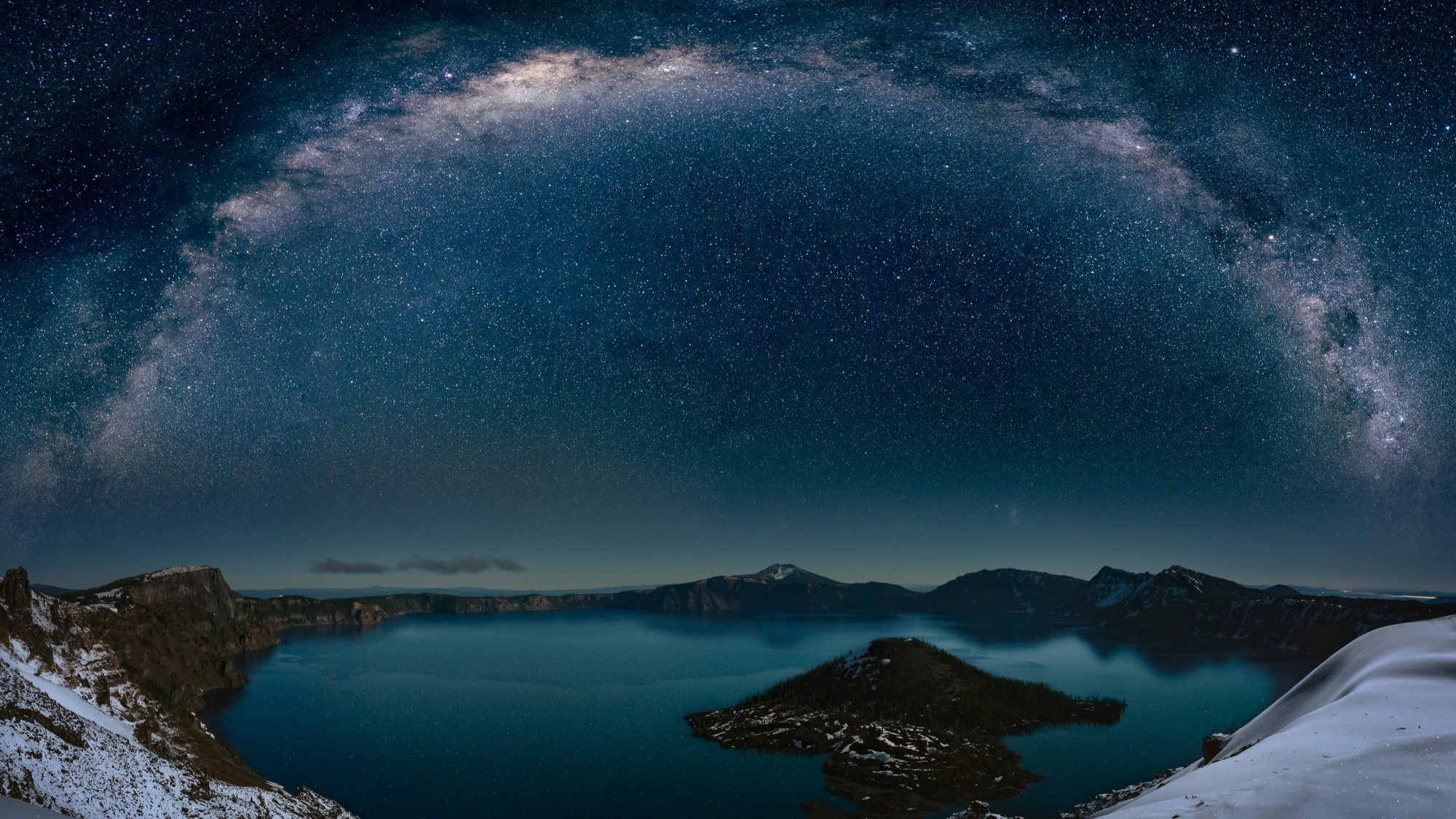

If you’re part of the 83 percent of Americans who live in an urban area, you probably can’t see many stars from your home. Cities are overwhelmed with lights, shining from lamps in skyscrapers, the streets, and the ones in bedroom windows. All of this light from the ground drowns out the stars in a phenomenon called light pollution.
Thankfully, a few organizations including the National Park Service (NPS) and the International Dark Sky Association (IDA) are fighting to preserve stargazing spots across the country and the world. Their goals are to ensure that people can access the majesty of the cosmos and safeguard eons-old cultures tied into the night sky. The IDA designates certain areas as “dark sky parks”—or even “dark sky sanctuaries” for the most remote, precious locations.
Of the US’s many dark sky sites, we’re highlighting seven of the most spectacular stargazing spots in the continental states. These might not be the country’s absolute darkest places, but they’re where you can see some incredible natural views and the beauty of the night sky at the same time.
Crater Lake National Park, Oregon
Crater Lake, Oregon’s only national park, is a showstopper, as seen in the top photo. The 6,000-plus foot elevation atop the volcanic caldera makes for pristine skywatching, since at this height there’s just less atmospheric stuff to get in the way between you and the stars. The website Space Tourism Guide recommends the Scenic Rim Drive, the path that circles the lake, as a popular spot. The starlight is supposedly so bright that flashlights are optional.
Rainbow Bridge National Monument, Utah

The Rainbow Bridge National Monument in Utah, which the IDA recently designated as a dark sky sanctuary, is a magnificent rock formation and one of the world’s largest natural bridges. It is a sacred site to the Hopi, Navajo, Zuni, and other Indigenous nations of the Southwest. Getting there isn’t easy: It is only accessible by boat or a lengthy 14-plus mile backpacking trip. If you are looking for a reverent experience of the night sky, this may be the place. As the National Park Service says on its website, “Please visit Rainbow Bridge in a spirit that honors and respects the cultures to whom it is sacred.”
Chaco Culture National Historical Park, New Mexico

Designated as a dark sky park in 2013, Chaco Culture NHP in New Mexico bears the marks of millenia of human astronomical activities. In this canyon, Ancestral Puebloan people built massive structures that reflected their observations of the night sky, such as the solar cycles. They also created astronomical rock art that still stands today. The park even offers night sky programs to carry on this long tradition, including public stargazing nights and a yearly astronomy festival.
Cherry Springs State Park, Pennsylvania

Cherry Springs Dark Sky Park in rural Pennsylvania is a contender for the absolute best stargazing in the United States—and unlike so many of the national parks, which are located in the southwest, this one’s an easy drive for urban New Englanders. Plus, it’s a personal favorite; my college’s astronomy group took yearly camping trips here, driving out of the glare of New York City and into this idyllic preserve. The park has a designated overnight astronomy observation field, complete with restrooms and telescope domes.
Big Bend National Park, Texas
Big Bend officially takes the title of having the darkest skies in a national park, at least in the lower 48 states. This Texas gem boasts over 150 miles of trails, drawing over half a million visitors per year. The National Park Service offers three campgrounds for stargazers, plus backcountry camping for the more adventurous wilderness enthusiasts. (Just don’t forget your permit!) It’s a great place to see the splendor of the Milky Way.
Stephen C. Foster State Park, Georgia
The terrain in Georgia’s Stephen C. Foster State Park is a bit different from the other deserts and forests on this list. It’s home to the Okefenokee Swamp, the largest wetland in the Southern US, which is bursting with biodiversity from alligators and black bears to storks and ibis. Plus, Foster State Park is the only gold-tier dark sky part in the Southeast, scoring the highest rating for a dark sky park from the IDA. It’s the best bet for folks living in Georgia, Florida, and other nearby states. You can even go for a late night paddle on the swamp and enjoy the stars from the water.
Katahdin Woods & Waters National Monument, Maine

Although it’s better known as the northern terminus of the Appalachian Trail, this forested region in Maine also hosts a stellar stargazing site. Katahdin Woods and Waters National Monument is a reserve that sprawls over 87,000 acres. The NPS claims this monument has “some of the darkest night skies east of the Mississippi River.” Just be sure to visit in a warmer season, since Katahdin freezes into a snowmobiler’s paradise in the winter.
